AU OPTRONICS T260XW01 V5
Specifications
Active Screen Size
26 inches
Display Area
566.40 (H) x 339.84(V) mm
Display Colors
16.7M Colors
Driver Element
a-Si TFT active matrix
Number of Pixels
1280 x 768 Pixel
Outline Dimension
620.8(H) x 389.00(V) x 39.5*(D) mm Inverter w/ plastic shield
Pixel Arrangement
RGB vertical stripe
Pixel Pitch (H x V)
0.4425 x 0.4425 mm
Surface Treatment
Hard-Coating, LR
Features
- 1280x768
- 26" LCD Screen
- Hard Coating, LR
- High Color Saturation
Datasheet
Extracted Text
Preliminary Specification for T26XW01 V5 26.0" WXGA Color TFT-LCD-Module Data Modul AG - Landsberger Str. 322 - 80687 München - Tel. 089-56017-0 - Fax 089-56017-119 – www.data-modul.de Contents No ITEM COVER CONTENTS RECORD OF REVISIONS 1 GENERAL DESCRIPTION 2 ABSOLUTE MAXIMUM RATINGS 3 ELECTRICAL SPECIFICATIONS 3-1 ELECTRICAL CHARACTREISTICS 3-2 INTERFACE CONNECTIONS 3-3 INPUT TIMING SPECIFICATIONS 3-4 COLOR INPUT DATA REFERNECE 3-5 POWER SEQUENCE 4 OPTICAL SFECIFICATIONS 5 MECHANICAL CHARACTERISTICS 6 RELIABLITY 7 INTERNATIONAL STANDARDS 7-1 SAFETY 7-2 EMC 8 Packing 9 PRECAUTIONS ©Copyright AU Optronics, Inc. January, 2004 All Rights Reserved. T260XW01 v.5 1/24 No Reproduction and Redistribution Allowed Record of Revision Version Date No Old Description New Description Remark V.5 Feb.26’04 All Preliminary Specification issued ©Copyright AU Optronics, Inc. January, 2004 All Rights Reserved. T260XW01 v.5 2/24 No Reproduction and Redistribution Allowed 1. General Description This specification applies to the 26.0 inch Color TFT-LCD Module T260XW01. This LCD module has a TFT active matrix type liquid crystal panel 1280x768 pixels, and diagonal size of 26.0 inch. This module supports 1280x768 XGA-WIDE mode (Non-interlace). Each pixel is divided into Red, Green and Blue sub-pixels or dots which are arranged in vertical stripes. Gray scale or the brightness of the sub-pixel color is determined with a 8-bit gray scale signal for each dot. The T260XW01 has been designed to apply the 8-bit 1 channel LVDS interface method. It is intended to support displays where high brightness, wide viewing angle, high color saturation, and high color depth are very important. * General Information Items Specification Unit Note Active Screen Size 26 inches Display Area 566.40 (H) x 339.84(V) mm Outline Dimension 620.8(H) x 389.00(V) x 39.5*(D) mm Inverter w/ plastic shield Driver Element a-Si TFT active matrix Display Colors 16.7M Colors Number of Pixels 1280 x 768 Pixel Pixel Arrangement RGB vertical stripe Pixel Pitch (H x V) 0.4425 x 0.4425 mm Surface Treatment Hard-Coating, LR ©Copyright AU Optronics, Inc. January, 2004 All Rights Reserved. T260XW01 v.5 3/24 No Reproduction and Redistribution Allowed 2. Absolute Maximum Ratings The following are maximum values which, if exceeded, may cause faulty operation or damage to the unit. Parameter Symbol Min. Max. Unit Note At 25±5℃ Power Input Voltage Vcc -0.3 5.5 Vdc ℃ Operating Temperature T 00 50 1 OP G Storage Temperature H -20 60 1 ST %RH Operating Ambient Humidity H 10 90 1 OP %RH Storage Humidity H 10 90 1 ST Note: The relative humidity must not exceed 90% non-condensing at temperatures of 40℃ or less. At temperatures greater than 40℃, the wet bulb temperature must not exceed 39℃. When operate at low temperatures, the brightness of CCFL will drop and the life time of CCFL will be reduced. Environment Note: When the lamp is lighted at the conditions of ambient temperature under 0℃, there is possibility that the lamp lights pinkish. ©Copyright AU Optronics, Inc. January, 2004 All Rights Reserved. T260XW01 v.5 4/24 No Reproduction and Redistribution Allowed 3. Electrical Specification 3-1 Electrical Characteristics The T260XW01 requires two power inputs. One is employed to power the LCD electronics and to drive the TFT array and liquid crystal. The second input which powers the CCFL, is typically generated by an inverter. Parameter Symbol Values Unit Notes Min Typ Max LCD: Power Supply Input Voltage Vcc 4.75 5.0 5.25 Vdc Power Supply Input Current Icc - 1.6 2.2 A Power Consumption Pc - 8.0 11 Watt Inrush Current I - - 2.5 Apeak RUSH Backlight Power Consumption - 94.8 124.8 W 1 Lamp Life Time 50,000 - - 2 Note: The design of the inverter must have specifications for the lamp in LCD Assembly. The performance of the Lamp in LCM, for example life time or brightness, is extremely influenced by the characteristics of the DC-AC Inverter. So all the parameters of an inverter should be carefully designed so as not to produce too much leakage current from high-voltage output of the inverter. When you design or order the inverter, please make sure unwanted lighting caused by the mismatch of the lamp and the inverter (no lighting, flicker, etc) never occurs. When you confirm it, the LCD Assembly should be operated in the same condition as installed in your instrument. Note: Do not attach a conducting tape to lamp connecting wire. If the lamp wire attach to conducting tape, TFT-LCD Module have a low luminance and the inverter has abnormal action because leakage current occurs between lamp wire and conducting tape. ©Copyright AU Optronics, Inc. January, 2004 All Rights Reserved. T260XW01 v.5 5/24 No Reproduction and Redistribution Allowed 3-2 Interface Connections - LCD Connector (CN1): DF19G-20P-1H (HRS) or equivalent - Mating Connector : DF19G-20S-1H (HRS) or equivalent - LVDS Transmitter: DS90C385 (N.S.) or THC63LVDM83A (THINE) or equivalent Pin No. Symbol Function Polarity Output Pin # Power Supply +5.0V 1 Vcc Power Supply +5.0V 2 Vcc Power Ground 3 GND Power Ground 4 GND LVDS Receiver Signal (-) Negative 5 RX0- LVDS Receiver Signal (+) Positive 6 RX0+ Ground 7 GND LVDS Receiver Signal (-) Negative 8 RX1- LVDS Receiver Signal (+) Positive 9 RX1+ Ground 10 GND LVDS Receiver Signal (-) Negative 11 RX2- LVDS Receiver Signal (+) Positive 12 RX2+ Ground 13 GND LVDS Receiver Clock Signal (-) Negative 14 RXCLK- LVDS Receiver Clock Signal (+) Positive 15 RXCLK+ Ground 16 GND LVDS Receiver Signal (-) Negative 17 RX3- LVDS Receiver Signal (+) Positive 18 RX3+ Ground 19 GND Reserved 20 NC Note: 1. All GND (ground) pins should be connected together and also be connected to the LCD’s metal frame. All Vcc (power input) pins should be connected together. ©Copyright AU Optronics, Inc. January, 2004 All Rights Reserved. T260XW01 v.5 6/24 No Reproduction and Redistribution Allowed l LVDS Order 1.LVDS_ORDER =L CHGORD = L RXCLK+ RXCLK- RX0 R0 G0 R5 R4 R3 R2 R1 R0 G0 RX1 G1 B1 B0 G5 G4 G3 G2 G1 B1 RX2 B2 DE VS HS B5 B4 B3 B2 RX3 R6 B7 B6 G7 G6 R7 R6 2. LVDS_ORDER =H CHGORD= H RXCLK+ RXCLK- RX0 R2 G2 R7 R6 R5 R4 R3 R2 G2 RX1 G3 B3 B2 G7 G6 G5 G4 G3 B3 RX2 B4 DE VS HS B7 B6 B5 B4 RX3 R0 B1 B0 G1 G0 R1 R0 ©Copyright AU Optronics, Inc. January, 2004 All Rights Reserved. T260XW01 v.5 7/24 No Reproduction and Redistribution Allowed l BACKLIGHT CONNECTOR PIN CONFIGURATION - 1.Electrical specification (Ta=25±5℃) TEST MEASURING No ITEM SYMBOL MIN TYP MAX UNIT CONDITION CIRCUIT 1 Input voltage VDDB 22.8 24.0 25.2 V VDDB=24V,MAX 2 Input current IDDB 3500 3950 4400 mA brightness 3 Oscillating frequency F0 VDDB=24V 58 62 66 kHz 4 PWM frequency FBI VDDB=24V 255 270 285 Hz - ON/OFF ON BLON VDDB=24V 2.0 5.0 V or OPEN 5 Control voltage OFF BLON VDDB=24V 0 - 0.8 V Dimming MAX VDIM VDDB=24V - 1.0 - V 6 Control voltage MIN VDIM VDDB=24V - 0 - V 2.Input specification CN1: S10B-PH-SM3-TB(JST) CN2: S12B-PH-SM3-TB(JST) No. Signal name Feature No. Signal name Feature 1 VDDB +24V 1 VDDB +24V 2 VDDB +24V 2 VDDB +24V 3 VDDB +24V 3 VDDB +24V 4 VDDB +24V 4 VDDB +24V 5 VDDB +24V 5 VDDB +24V 6 GNDB GND 6 GNDB GND 7 GNDB GND 7 GNDB GND 8 GNDB GND 8 GNDB GND 9 GNDB GND 9 GNDB GND 10 GNDB GND 10 GNDB GND 11 VDIM Bright control ※1 12 BLON ON/OFF Signal ※2 ※1: Connection of brightness control terminal (1)Bright control by the variable resistor VDIM-GND short-circuit : Min. brightness (2)Bright control by the voltage 0V : Min. brightness 1V : Max. brightness ※2: BLON Logic H : Back Light ON L : Back Light OFF OPEN : Back Light ON ©Copyright AU Optronics, Inc. January, 2004 All Rights Reserved. T260XW01 v.5 8/24 No Reproduction and Redistribution Allowed 3-3 Input Timing Specifications This is the signal timing required at the input of the User connector. All of the interface signal timing should be satisfied with the following specifications for it’s proper operation. l Timing Table DE only mode Parameter Symbol Min. Typ. Max. Unit Condition Clock Frequency 1/ Tc 55 65 75 MHz Hsync Frequency - 47.5 48.5 49.5 KHz Vsync Frequency - 47 60 66 Hz Period TH 1340 1344 1600 clocks Horizontal Active THD 1280 1280 1280 clocks Period TV 776 806 850 lines Vertical Active TVD 768 768 768 lines * TCH,TCL,TDS,TDH,TES : refer to timing specification of LVDS Tx chip. ©Copyright AU Optronics, Inc. January, 2004 All Rights Reserved. T260XW01 v.5 9/24 No Reproduction and Redistribution Allowed 3-4 Color Input Data Reference The brightness of each primary color (red, green and blue) is based on the 8 bit gray scale data input for the color; the higher the binary input, the brighter the color. The table below provides a reference for color versus data input. COLOR DATA REFERENCE Input Color Data Color RED GREEN BLUE MSB LSB MSB LSB MSB LSB R7 R6 R5 R4 R3 R2 R1 R0 G7 G6 G5 G4 G3 G2 G1 G0 B7 B6 B5 B4 B3 B2 B1 B0 Black 0 0 0 0 0 0 0 0 0 0 0 0 0 0 0 0 0 0 0 0 0 0 0 0 Red(255) 1 1 1 1 1 1 1 1 0 0 0 0 0 0 0 0 0 0 0 0 0 0 0 0 Green(255) 0 0 0 0 0 0 0 0 1 1 1 1 1 1 1 1 0 0 0 0 0 0 0 0 Basic Blue(255) 0 0 0 0 0 0 0 0 0 0 0 0 0 0 0 0 1 1 1 1 1 1 1 1 Color Cyan 0 0 0 0 0 0 0 0 1 1 1 1 1 1 1 1 1 1 1 1 1 1 1 1 Magenta 1 1 1 1 1 1 1 1 0 0 0 0 0 0 0 0 1 1 1 1 1 1 1 1 Yellow 1 1 1 1 1 1 1 1 1 1 1 1 1 1 1 1 0 0 0 0 0 0 0 0 White 1 1 1 1 1 1 1 1 1 1 1 1 1 1 1 1 1 1 1 1 1 1 1 1 RED(000) 0 0 0 0 0 0 0 0 0 0 0 0 0 0 0 0 0 0 0 0 0 0 0 0 RED(001) 0 0 0 0 0 0 0 0 0 0 0 0 0 0 0 0 0 0 0 0 0 0 0 0 RED ---- RED(254) 1 1 1 1 1 1 1 0 0 0 0 0 0 0 0 0 0 0 0 0 0 0 0 0 RED(255) 1 1 1 1 1 1 1 1 0 0 0 0 0 0 0 0 0 0 0 0 0 0 0 0 GREEN(000) 0 0 0 0 0 0 0 0 0 0 0 0 0 0 0 0 0 0 0 0 0 0 0 0 GREEN(001) 0 0 0 0 0 0 0 0 0 0 0 0 0 0 0 1 0 0 0 0 0 0 0 0 GREEN ---- GREEN(254) 0 0 0 0 0 0 0 0 1 1 1 1 1 1 1 0 0 0 0 0 0 0 0 0 GREEN(255) 0 0 0 0 0 0 0 0 1 1 1 1 1 1 1 1 0 0 0 0 0 0 0 0 BLUE(000) 0 0 0 0 0 0 0 0 0 0 0 0 0 0 0 0 0 0 0 0 0 0 0 0 BLUE(001) 0 0 0 0 0 0 0 0 0 0 0 0 0 0 0 0 0 0 0 0 0 0 0 1 BLUE ------- BLUE(254) 0 0 0 0 0 0 0 0 0 0 0 0 0 0 0 0 1 1 1 1 1 1 1 0 BLUE(255) 0 0 0 0 0 0 0 0 0 0 0 0 0 0 0 0 1 1 1 1 1 1 1 1 ©Copyright AU Optronics, Inc. January, 2004 All Rights Reserved. T260XW01 v.5 10/24 No Reproduction and Redistribution Allowed 3-5 Power Sequence Values Units Parameter Min. Typ. Max. t1 470 - 1000 us t2 5 - - ms t3 200 - - ms t4 200 - - ms t5 5 - - ms t6 - - 30 ms t7 1 - - s Note: User should follow the power on/off sequence and the rising/falling time to avoid miss operation of the panel. ©Copyright AU Optronics, Inc. January, 2004 All Rights Reserved. T260XW01 v.5 11/24 No Reproduction and Redistribution Allowed 4. Optical Specification Optical characteristics are determined after the unit has been ‘ON’ and stable for approximately 30 minutes in a dark environment at 25℃. The values specified are at an approximate distance 50cm from the LCD surface at a Φ θ ° viewing angle of and equal to 0 . Fig.1 1 presents additional information concerning the measurement equipment and method. PR880 Units Notes Parameter Symbol Values Min. Typ. Max. Contrast Ratio CR 500 600 1 Surface Luminance, white LWH 400 500 cd/㎡ 2 Response Time Gray to Gray - 12 ms 3 Tr - 15 18 4 Tf - 10 13 4 Color RED R 0.647 X Chromaticity R 0.339 Y Typ.-0.03 Typ.+0.03 GREEN G 0.296 X G 0.613 Y BLUE B 0.138 X B 0.075 Y WHITE W 0.289 X W 0.306 Y Viewing Angle x axis, right(φ=0°) θ 80 85 - Degree 5 r x axis, left(φ=180°) θ 80 85 - l y axis, up(φ=90°) θ 80 85 - u y axis, down (φ=0°) θ 80 85 - d White Uniformity δ 70 - - % 6 W ©Copyright AU Optronics, Inc. January, 2004 All Rights Reserved. T260XW01 v.5 12/24 No Reproduction and Redistribution Allowed Note: 1. Contrast Ratio (CR) is defined mathematically as: Surface Luminance with all white pixels Contrast Ratio= Surface Luminance with all black pixels 2. Surface luminance is luminance value at point 1 across the LCD surface 50cm from the surface with all pixels displaying white. (FIG2) 3. The gray to gray response time is only available between 33~223 gray level because of material limitation. 4.Response time is the time required for the display to transition from white to black (Rise Time, Tr ) and R from black to white (Decay Time, Tr ). For additional information see FIG3. D 5.Viewing angle is the angle at which the contrast ratio is greater than 5. The angles are determined for the horizontal or x axis and the vertical or y axis with respect to the z axis which is normal to the LCD surface. For more information see FIG4. 6. Definition of white uniformity: White uniformity is calculated with the following formula. Luminance are measured at the following five points (1~5) . Minimum Brightness of five points δ W = Maximum Brightness of five points ©Copyright AU Optronics, Inc. January, 2004 All Rights Reserved. T260XW01 v.5 13/24 No Reproduction and Redistribution Allowed FIG. 2 Luminance FIG.3 Response Time The response time is defined as the following figure and shall be measured by switching the input signal for “black” and “white”. ©Copyright AU Optronics, Inc. January, 2004 All Rights Reserved. T260XW01 v.5 14/24 No Reproduction and Redistribution Allowed FIG.4 Viewing angle ©Copyright AU Optronics, Inc. January, 2004 All Rights Reserved. T260XW01 v.5 15/24 No Reproduction and Redistribution Allowed 5. Mechanical Characteristics The contents provide general mechanical characteristics for the model T260XW01. In addition the figures in the next page are detailed mechanical drawing of the LCD. Horizontal 620.8mm Outline Dimension Vertical 389.00mm Depth 39.50mm(w/I inverter) 33.50mm(w/o inverter) Bezel Area Horizontal 570.40mm Vertical 343.84mm Active Display Area Horizontal 566.40mm Vertical 339.84mm Weight 4000g (Typ.) Surface Treatment Hard Coating, LR Note: Suggest to fix this panel via side mount as well as front mount simultaneously. ©Copyright AU Optronics, Inc. January, 2004 All Rights Reserved. T260XW01 v.5 16/24 No Reproduction and Redistribution Allowed Front View ©Copyright AU Optronics, Inc. January, 2004 All Rights Reserved. T260XW01 v.5 17/24 No Reproduction and Redistribution Allowed Rear View ©Copyright AU Optronics, Inc. January, 2004 All Rights Reserved. T260XW01 v.5 18/24 No Reproduction and Redistribution Allowed 6. Reliability Environment test condition No Test Item Condition Remark 1 High temperature storage test Ta= 60℃ 240h Note 1,2,3 2 Low temperature storage test Ta= -20℃ 240h Note 1,2,3 Ta=50℃ 50%RH 240h 3 High temperature operation test Note 1,2,3 4 Low temperature operation test Ta=0℃ 240h Note 1,2,3 5 Thermal Shock Test Note 1,2,3 -20℃~60℃ 1H, 10mins, 1H, 5cycles Note 3 150 pF,150Ω,10kV,1 second, 9 6 Electrostatic discharge (non-operation) position on the panel, 10 times each place Wave form: random Note 1,2,3 7 Vibration test Vibration level : 1.0G RMS (non-operating) Bandwidth : 10-500Hz Duration: X, Y, Z 10min One time each direction Shock level: 100G Note 1,2,3 8 Shock test Waveform: half since wave, 2ms (non-operating) Direction: ±X, ±Y, ±Z One time each direction Note 1: Evaluation should be tested after storage at room temperature for one hour. Note 2: There should be no change which might affect the practical display function when the display quality test is conducted under normal operating condition. Note 3: Judgment: (a) Function OK. (b). No serious image quality degradation. ©Copyright AU Optronics, Inc. January, 2004 All Rights Reserved. T260XW01 v.5 19/24 No Reproduction and Redistribution Allowed 7. International Standard 7-1. Safety (1) UL1950 Third Edition, Underwriters Laboratories, Inc. Jan. 28, 1995 Standard for Safety of Information Technology Equipment Including electrical Business Equipment. (2) CAN/CSA C22.2 No. 950-95 Third Edition, Canadian Standards Association, Jan. 28, 1995 Standard for Safety of Information Technology Equipment Including Electrical Business Equipment. (3) EN60950 : 1992+A2: 1993+A2: 1993+C3: 1995+A4: 1997+A11: 1997 IEC 950: 1991+A1: 1992+A2: 1993+C3: 1995+A4:1996 European Committee for Electrotechnical Standardization (CENELEC) EUROPEAN STANDARD for Safety of Information Technology Equipment Including Electrical Business Equipment. 7-2. EMC a) ANSI C63.4 “Methods of Measurement of Radio-Noise Emissions from Low-Voltage Electrical and Electrical Equipment in the Range of 9kHz to 40GHz. “American National standards Institute(ANSI), 1992 b) C.I.S.P.R “Limits and Methods of Measurement of Radio Interface Characteristics of Information Technology Equipment.” International Special committee on Radio Interference. c) EN 55022 “Limits and Methods of Measurement of Radio Interface Characteristics of Information Technology Equipment.” European Committee for Electrotechnical Standardization. (CENELEC), 1998 ©Copyright AU Optronics, Inc. January, 2004 All Rights Reserved. T260XW01 v.5 20/24 No Reproduction and Redistribution Allowed 8. Packing (1) Label Sample xxxxxxxxxxx-xx100* (2) Carton Label (3) Carton Size The outside dimension of carton is 767(L) mm * 270(W) mm * 490(H) mm. ©Copyright AU Optronics, Inc. January, 2004 All Rights Reserved. T260XW01 v.5 21/24 No Reproduction and Redistribution Allowed 9. PRECAUTIONS Please pay attention to the followings when you use this TFT LCD module. 9-1 MOUNTING PRECAUTIONS (1) You must mount a module using holes arranged in four corners and four sides. (2) You should consider the mounting structure so that uneven force (ex. Twisted stress) is not applied to module. And the case on which a module is mounted should have sufficient strength so that external force is not transmitted directly to the module. (3) Please attach the surface transparent protective plate to the surface in order to protect the polarizer. Transparent protective plate should have sufficient strength in order to the resist external force. (4) You should adopt radiation structure to satisfy the temperature specification. (5) Acetic acid type and chlorine type materials for the cover case are not desirable because the former generates corrosive gas of attacking the polarizer at high temperature and the latter causes circuit break by electro-chemical reaction. (6) Do not touch, push or rub the exposed polarizers with glass, tweezers or anything harder than HB pencil lead. And please do not rub with dust clothes with chemical treatment. Do not touch the surface of polarizer for bare hand or greasy cloth. (Some cosmetics are detrimental to the polarizer.) (7) When the surface becomes dusty, please wipe gently with absorbent cotton or other soft materials like chamois soaks with petroleum benzene. Normal-hexane is recommended for cleaning the adhesives used to attach front/ rear polarizers. Do not use acetone, toluene and alcohol because they cause chemical damage to the polarizer. (8) Wipe off saliva or water drops as soon as possible. Their long time contact with polarizer causes deformations and color fading. (9) Do not open the case because inside circuits do not have sufficient strength. 9-2 OPERATING PRECAUTIONS (1) The spike noise causes the mis-operation of circuits. It should be lower than following voltage: V=±200mV(Over and under shoot voltage) (2) Response time depends on the temperature. (In lower temperature, it becomes longer..) (3) In lower temperature, response time (required time that brightness is stable after turned on) becomes longer and it might effect the brightness. (4) Be careful for condensation at sudden temperature change. Condensation makes damage to polarizer or electrical contacted parts. And after fading condensation, smear or spot will occur. (5) When fixed patterns are displayed for a long time, remnant image is likely to occur. (6) Module has high frequency circuits. Sufficient suppression to the electromagnetic interference shall be done by system manufacturers. Grounding and shielding methods may be important to minimize the interface. 9-3 ELECTROSTATIC DISCHARGE CONTROL Since a module is composed of electronic circuits, it is not strong to electrostatic discharge. Make certain that treatment persons are connected to ground through wrist band etc. And don’t touch interface pin directly. ©Copyright AU Optronics, Inc. January, 2004 All Rights Reserved. T260XW01 v.5 22/24 No Reproduction and Redistribution Allowed 9-4 PRECAUTIONS FOR STRONG LIGHT EXPOSURE Strong light exposure causes degradation of polarizer and color filter. 9-5 STORAGE When storing modules as spares for a long time, the following precautions are necessary. (1) Store them in a dark place. Do not expose the module to sunlight or fluorescent light. Keep the temperature between 5℃ and 35℃ at normal humidity. (2) The polarizer surface should not come in contact with any other object. It is recommended that they be stored in the container in which they were shipped. 9-6 HANDLING PRECAUTIONS FOR PROTECTION FILM (1) The protection film is attached to the bezel with a small masking tape. When the protection film is peeled off, static electricity is generated between the film and polarizer. This should be peeled off slowly and carefully by people who are electrically grounded and with well ion-blown equipment or in such a condition, etc. (2) When the module with protection film attached is stored for a long time, sometimes there remains a very small amount of flue still on the Bezel after the protection film is peeled off. (3) You can remove the glue easily. When the glue remains on the Bezel or its vestige is recognized, please wipe them off with absorbent cotton waste or other soft material like chamois soaked with normal-hexane. ©Copyright AU Optronics, Inc. January, 2004 All Rights Reserved. T260XW01 v.5 23/24 No Reproduction and Redistribution Allowed Data Modul Aktiengesellschaft Landsberger Str. 322 D-80687 München Tel.: +49 -89 -56017 -0 Fax: +49 -89 -56017 -119 Data Modul Sales Office Hamburg An der Alster 48 D-20099 Hamburg Tel.: +49 -40 -280158 -0 Fax: +49 -40 -280158 -19 Data Modul Sales Office Düsseldorf Fritz-Vomfelde-Str. 8 D-40547 Düsseldorf Tel.: +49 -211 -52709 -0 Fax: +49 -211 -52709 -19 Data Modul Sales Office Stuttgart Friedrich-List-Str. 42 D-70771 Leinfelden- Echterdingen Tel.: +49 -711 -794613 -5 Fax: +49 -711 -794613 -7 Data Modul Sales Office Frankfurt frankfurt@data-modul.de Tel.: +49 -671 -92087 -12 Fax: +49 -671 -92087 -14 Data Modul Inc. 1767-46 Veterans Memorial Highway Islandia NY 11749 USA Tel.: +1 -631 -951 -0800 Fax: +1 -631 -951 -2121
Frequently asked questions
What makes Elite.Parts unique?

What kind of warranty will the T260XW01 V5 have?

Which carriers does Elite.Parts work with?

Will Elite.Parts sell to me even though I live outside the USA?

I have a preferred payment method. Will Elite.Parts accept it?

Why buy from GID?

Quality
We are industry veterans who take pride in our work

Protection
Avoid the dangers of risky trading in the gray market

Access
Our network of suppliers is ready and at your disposal

Savings
Maintain legacy systems to prevent costly downtime

Speed
Time is of the essence, and we are respectful of yours



 Manufacturers
Manufacturers
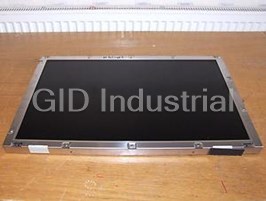

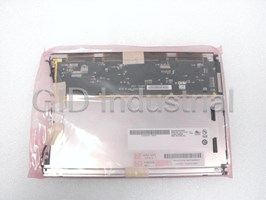
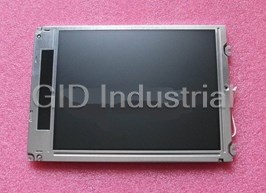
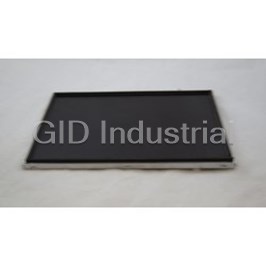
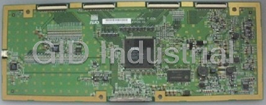

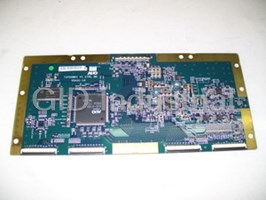




What they say about us
FANTASTIC RESOURCE
One of our top priorities is maintaining our business with precision, and we are constantly looking for affiliates that can help us achieve our goal. With the aid of GID Industrial, our obsolete product management has never been more efficient. They have been a great resource to our company, and have quickly become a go-to supplier on our list!
Bucher Emhart Glass
EXCELLENT SERVICE
With our strict fundamentals and high expectations, we were surprised when we came across GID Industrial and their competitive pricing. When we approached them with our issue, they were incredibly confident in being able to provide us with a seamless solution at the best price for us. GID Industrial quickly understood our needs and provided us with excellent service, as well as fully tested product to ensure what we received would be the right fit for our company.
Fuji
HARD TO FIND A BETTER PROVIDER
Our company provides services to aid in the manufacture of technological products, such as semiconductors and flat panel displays, and often searching for distributors of obsolete product we require can waste time and money. Finding GID Industrial proved to be a great asset to our company, with cost effective solutions and superior knowledge on all of their materials, it’d be hard to find a better provider of obsolete or hard to find products.
Applied Materials
CONSISTENTLY DELIVERS QUALITY SOLUTIONS
Over the years, the equipment used in our company becomes discontinued, but they’re still of great use to us and our customers. Once these products are no longer available through the manufacturer, finding a reliable, quick supplier is a necessity, and luckily for us, GID Industrial has provided the most trustworthy, quality solutions to our obsolete component needs.
Nidec Vamco
TERRIFIC RESOURCE
This company has been a terrific help to us (I work for Trican Well Service) in sourcing the Micron Ram Memory we needed for our Siemens computers. Great service! And great pricing! I know when the product is shipping and when it will arrive, all the way through the ordering process.
Trican Well Service
GO TO SOURCE
When I can't find an obsolete part, I first call GID and they'll come up with my parts every time. Great customer service and follow up as well. Scott emails me from time to time to touch base and see if we're having trouble finding something.....which is often with our 25 yr old equipment.
ConAgra Foods